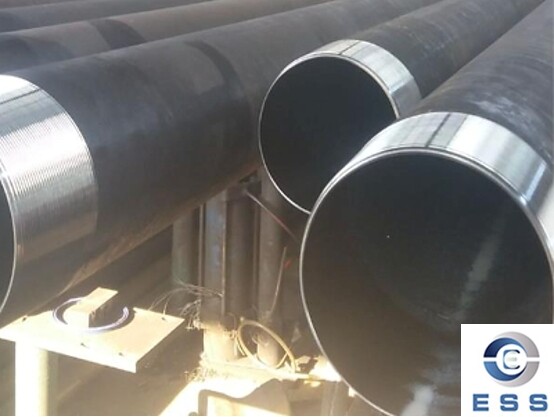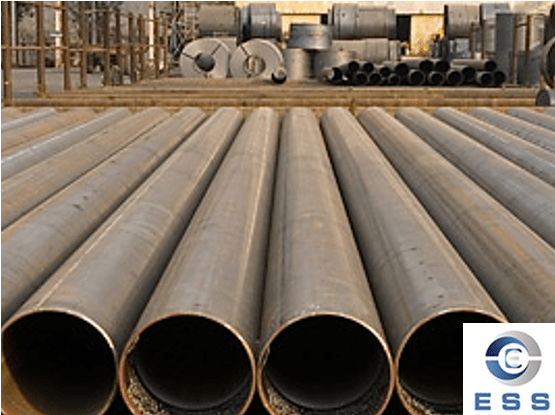
The materials of cold-rolled seamless
pipe are mainly carbon steel, alloy steel, stainless steel, etc. Among
them, carbon steel has high strength, good wear resistance and low price, and
is a material with high cost performance. Cold-rolled seamless steel pipe is a
commonly used steel pipe material, often used in construction, machinery,
petrochemical, aviation and other fields. So how to choose its diameter size?
Common diameter range
The diameter size of cold-rolled seamless
pipe has a wide range.
1. Small diameter
The small diameter can start from a few
millimeters, such as 3mm, 4mm. This kind of small diameter pipe is often used
in the hydraulic or pneumatic systems of some precision instruments and small
equipment, such as the infusion tube of some medical equipment and the air tube
of pneumatic tools.
2. Medium diameter
The medium diameter is generally around
10-50mm. Among them, 10-20mm cold-rolled seamless pipes are widely used in
general machinery manufacturing, such as for making transmission shafts of
small machinery; 20-50mm pipes are more common in building water supply and
drainage systems, general industrial fluid delivery pipelines and other
scenarios, such as cooling water circulation pipelines in factories.
3. Large diameter
Large diameter cold-rolled seamless pipes
can reach a diameter of more than 100mm, or even several meters. Such
large-diameter pipes are mainly used in large industrial pipeline systems, such
as the main pipeline for transporting crude oil in the petrochemical industry,
and the refrigerant delivery pipeline for central air conditioning in large
buildings.
Dimensional accuracy
Cold-rolled seamless pipes have high
dimensional accuracy.
1. Outer diameter tolerance
The outer diameter tolerance can generally
be controlled between ±0.1-±0.5mm,
depending on the pipe diameter and production process. For example, for smaller
diameter pipes (less than 10mm), the outer diameter tolerance may reach about ±0.1mm, which enables them to meet application scenarios with
extremely high dimensional accuracy requirements, such as hydraulic systems of
precision machinery.
2. Inner diameter tolerance
The inner diameter tolerance is also
relatively small, which is very important for some fluid delivery pipelines
that require precise flow control. For example, in chemical production, reagent
delivery pipelines with high flow accuracy requirements require precise inner
diameter dimensions to ensure the accurate delivery of reagents.
Factors affecting the selection of
diameter size
1. Flow rate and flow rate of the conveying
medium
If a large amount of fluid is to be
transported and there are certain requirements for the flow rate, a larger
diameter pipe is required. For example, the main pipeline for transporting
urban domestic water usually has a larger diameter to meet the water needs of a
large number of residents.
2. Pressure to bear
For pipelines that withstand high pressure,
larger diameter pipes tend to disperse pressure better under the same material.
For example, in high-pressure natural gas transmission pipelines, the selection
of pipe diameter size should consider the internal pressure that the pipeline
can withstand.
3. Size of other connected components
If standard flanges, valves and other
components are connected to the pipe, the pipe diameter must match the
interface size of these components. For example, when connected to a standard
industrial flange, the outer diameter of the cold-rolled seamless pipe must
meet the inner diameter requirements of the flange to ensure a tight
connection.
Summary
Cold-rolled seamless pipes have various
diameters and specifications, high dimensional accuracy, and are suitable for
various scenarios. In practical applications, the pipe diameter needs to be
selected based on factors such as medium characteristics, pressure, and
connecting components. With these advantages, it plays a key role in the
industrial field and continues to promote the development of the industry.













 Eastern Steel Manufacturing Co.,Ltd not only improve product production and sales services, but also provide additional value-added services. As long as you need, we can complete your specific needs together.
Eastern Steel Manufacturing Co.,Ltd not only improve product production and sales services, but also provide additional value-added services. As long as you need, we can complete your specific needs together.










